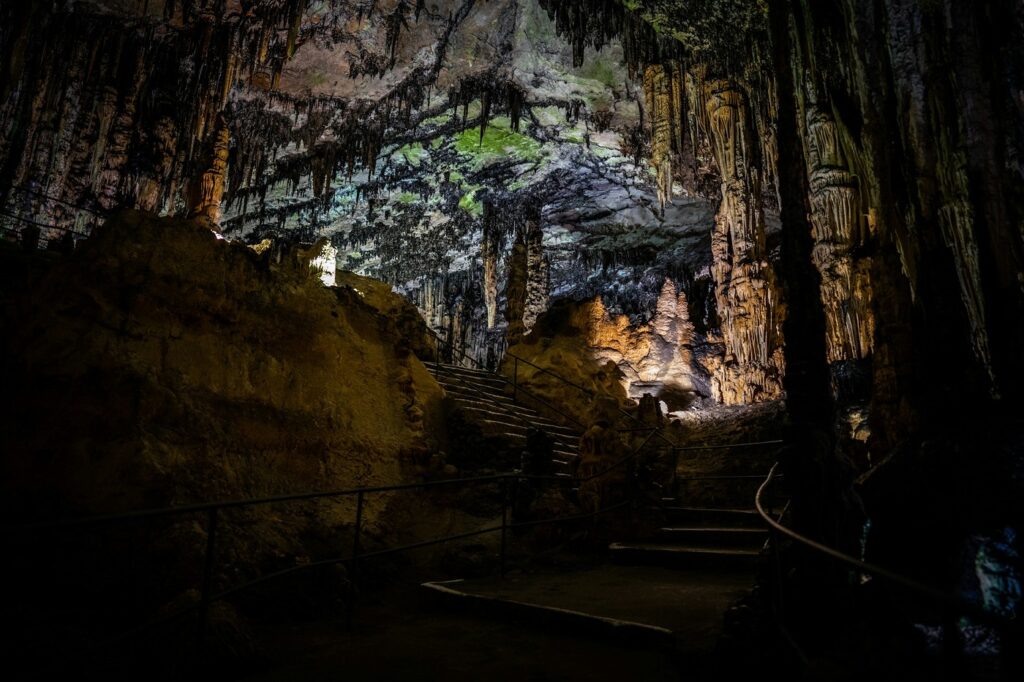Spelunking, often called caving, is an adventurous pursuit that invites you to explore the mysterious underground passages carved by nature over millennia. Imagine stepping into a hidden cathedral sculpted by water and time, where every twist and turn reveals a new story etched in stone. As a passionate spelunker myself, I crafted this article to guide you through what spelunking is, how to get started, what it involves, the nuances of cave spelunking, and the essential gear you need to embark on this journey safely and confidently.
What Is Spelunking?
Spelunking is the exploration of caves, a thrilling activity that combines physical challenge, scientific curiosity, and a deep appreciation for natural beauty. Think of it as an underground safari, where instead of animals, you discover geological formations like stalactites and stalagmites, hidden pools, and ancient fossils.
Unlike a typical hike, spelunking immerses you in a world where light fades quickly and the terrain demands agility and respect.
Historically, humans have ventured into caves for shelter, spiritual rituals, and resource gathering. Today, spelunking has evolved into a recreational activity that attracts explorers eager to uncover the earth’s subterranean secrets.
It’s a blend of adventure and discovery, where each cave offers a unique experience — some are easy to navigate, like walking through a natural tunnel, while others challenge you to climb, crawl, or rappel through narrow, vertical shafts.
Spelunking is not merely walking into a cave; it’s a dynamic interaction with a fragile environment. Just as a painter respects their canvas, spelunkers must tread lightly to preserve these natural wonders for future explorers.
This activity demands preparation, knowledge, and a spirit of adventure akin to that of early explorers charting unknown lands.
How to Get Into Spelunking
Starting spelunking is like learning to dance in a new style — it requires guidance, practice, and the right environment. First, it’s essential to connect with experienced cavers or join a local caving club. These communities offer mentorship, safety training, and access to beginner-friendly caves, much like a dance studio provides lessons and a safe space to practice.
Begin with horizontal caves, which are generally less technical and involve walking or scrambling through relatively flat passages.
This allows you to build confidence and learn basic techniques such as moving over uneven surfaces and navigating tight spaces. Think of this as mastering the basic steps before attempting more complex moves.
Safety is paramount. Always inform someone outside your group about your plans, carry multiple light sources, and never cave alone. The underground environment can be unpredictable, so preparation is your best ally. Consider taking a formal caving course where you can learn rope techniques, emergency procedures, and environmental conservation principles.
As you gain experience, you might progress to vertical caving, which involves climbing and rappelling.
This stage is akin to advancing from beginner to intermediate in a sport, requiring specialized equipment and skills. Remember, spelunking is a journey — one that rewards patience, respect for nature, and continuous learning.

What Does Spelunking Involve?
Spelunking is a multifaceted activity that combines physical exertion, technical skills, and environmental awareness. Imagine navigating a natural maze where the walls shift from smooth limestone to jagged rock, and the floor alternates between dry earth and slippery mud.
Physically, spelunking demands endurance and flexibility. You might crawl through narrow passages barely wider than your shoulders, climb steep rock faces, or wade through underground streams.
These movements require a blend of strength and finesse, similar to how a gymnast adapts to different apparatuses.
Technically, spelunkers use a variety of techniques depending on the cave’s layout. Horizontal caving involves scrambling and traversing, where you use your hands and feet to move over rocks and ledges. Vertical caving introduces rope work such as abseiling (controlled descent) and ascending, requiring knowledge of knots, harnesses, and safety protocols.
Environmental respect is integral. Caves are delicate ecosystems hosting unique flora and fauna. Spelunkers act as both explorers and guardians, avoiding damage to formations and minimizing their ecological footprint. Like a visitor in a museum, you observe without touching, preserving the cave’s natural state.
Below is a vertical workflow diagram I created illustrating the typical stages of a spelunking expedition:
Typical Stages of a Spelunking Expedition
1. OPERATION PREP: GEAR CHECK & PLAN
↓
2. ENTRY PROTOCOL: SUBTERRANEAN ACCESS
↓
3. ZONE NAVIGATION: EXPLORATION PHASE
↓
4. VERTICAL MANEUVER: ASCENT/DESCENT
↓
5. EXIT PROCEDURE: SURFACE RETURN
Cave Spelunking: The Unique Challenges
Cave spelunking presents challenges that differentiate it from other outdoor activities. Imagine stepping into a world where daylight is replaced by the beam of your headlamp, and every sound echoes off ancient stone walls. The environment tests your physical limits and mental acuity.
One of the primary challenges is darkness. Beyond the cave entrance, natural light disappears, forcing spelunkers to rely entirely on artificial lighting. This requires carrying multiple light sources and managing battery life carefully. The darkness also makes navigation tricky — a wrong turn can lead to disorientation in a labyrinth of passages.
Temperature and humidity inside caves often contrast sharply with the surface. Many caves maintain a constant cool temperature year-round, which can lead to hypothermia if you’re unprepared. The air can be damp, and water hazards like pools or streams may appear unexpectedly, requiring waterproof gear and caution. Frigid temperatures was one of the biggest challenges I faced the first time I went Spelunking.
Cave formations add another layer of complexity. Stalactites hanging from ceilings and stalagmites rising from floors create natural obstacles. Moving through these spaces is like threading a needle — careful and deliberate movements are necessary to avoid injury and preserve the cave’s integrity.
Here is a cool chart I created summarizing common environmental challenges in cave spelunking:
Environmental Hazards in Cave Spelunking
SENSOR DEPTH: Total absence of natural illumination requires redundant light sources.
THERMAL ZONE: Constant low temperature demands insulated, multi-layer dry wear.
AQUATIC HAZARD: Unpredictable water bodies necessitate waterproof gear and bypass strategies.
STRUCTURAL INTEGRITY: Delicate geological features require precision movement and non-contact.
Common Spelunking Gear
The right gear is your lifeline underground. Imagine spelunking gear as your survival toolkit, each item tailored to meet the demands of the cave environment, much like a pilot’s instruments are essential for safe flight.
Helmet with Headlamp: Protects your head from bumps and provides hands-free illumination. The headlamp is your eyes in the dark, and having backup lights is critical.
Clothing: Durable, moisture-wicking layers keep you warm and dry. Synthetic fabrics are preferred over cotton, which retains moisture. Waterproof outer layers may be necessary in wet caves.
Footwear: Sturdy boots with good grip help you navigate slippery and uneven surfaces. Ankle support is important to prevent injuries.
Gloves: Protect hands from sharp rocks and cold water while maintaining dexterity.
Ropes and Harnesses: Essential for vertical caving, these allow safe ascent and descent in steep passages.
Navigation Tools: Maps, compasses, and sometimes GPS devices aid in route finding and prevent getting lost.
Emergency Supplies: First aid kit, food, water, and thermal blankets are vital for unexpected delays or accidents.
One thing I learned quickly while Spelunking, was that the quality of your footwear and gloves was the most important aspect of overall comfort. At least that’s how I feel, you might think differently.
In the workflow diagram I created below, the essential gear categories are illustrated in a more digestible way:
Cave Spelunking Essential Gear Categorized
HEAD UNIT: LIGHT SOURCE & PROTECTION
THERMAL LAYERS: INSULATED CLOTHING
TRACTION FOOTWEAR: HEAVY DUTY BOOTS
HAND GAUNTLETS: PROTECTION & GRIP
VERTICAL SYSTEM: ROPE & HARNESS RIG
NAVIGATIONAL UNIT: MAP & COMPASS
EMERGENCY PACK: SURVIVAL SUPPLIES
Spelunking is a captivating blend of adventure, physical challenge, and environmental stewardship. Like a deep-sea diver exploring the ocean’s depths, spelunkers uncover hidden treasures beneath the earth’s surface, each cave offering a new chapter in the story of our planet.
With proper preparation, respect for nature, and the right equipment, spelunking can be a safe and unforgettable experience that connects you with the raw beauty of the subterranean world.
If you’re ready to take the plunge, remember: start slow, learn from experts, and always prioritize safety. The underground awaits your discovery.
Explore Related Articles

Comprehensive Guide: What is the Degree of Friendship Standard Form?
Friendship, a bond shared between individuals, is a cornerstone of human social life. It is a relationship that can bring joy, comfort, and support, and it often evolves through various stages and degrees of closeness. The concept of the "Degree of Friendship" refers to the different levels or stages...
Story of How a Woman Ruined a Wedding Because the Bride...
A drama filled story of how a woman ruined a wedding because the bride told everyone she was a homewrecker in love with the groom named Barrett is trending. The woman, who revealed her story anonymously on Reddit, claimed that she was set up by her former best friend,...
10 Ideas of What To Do When You’re Bored at Home...
Are you feeling bored at home and looking for something to do that doesn’t require spending money or even stepping outside? You’re not alone. Many of us find ourselves in this situation, especially in recent times. But don’t worry, being at home doesn’t mean you have to be bored....






